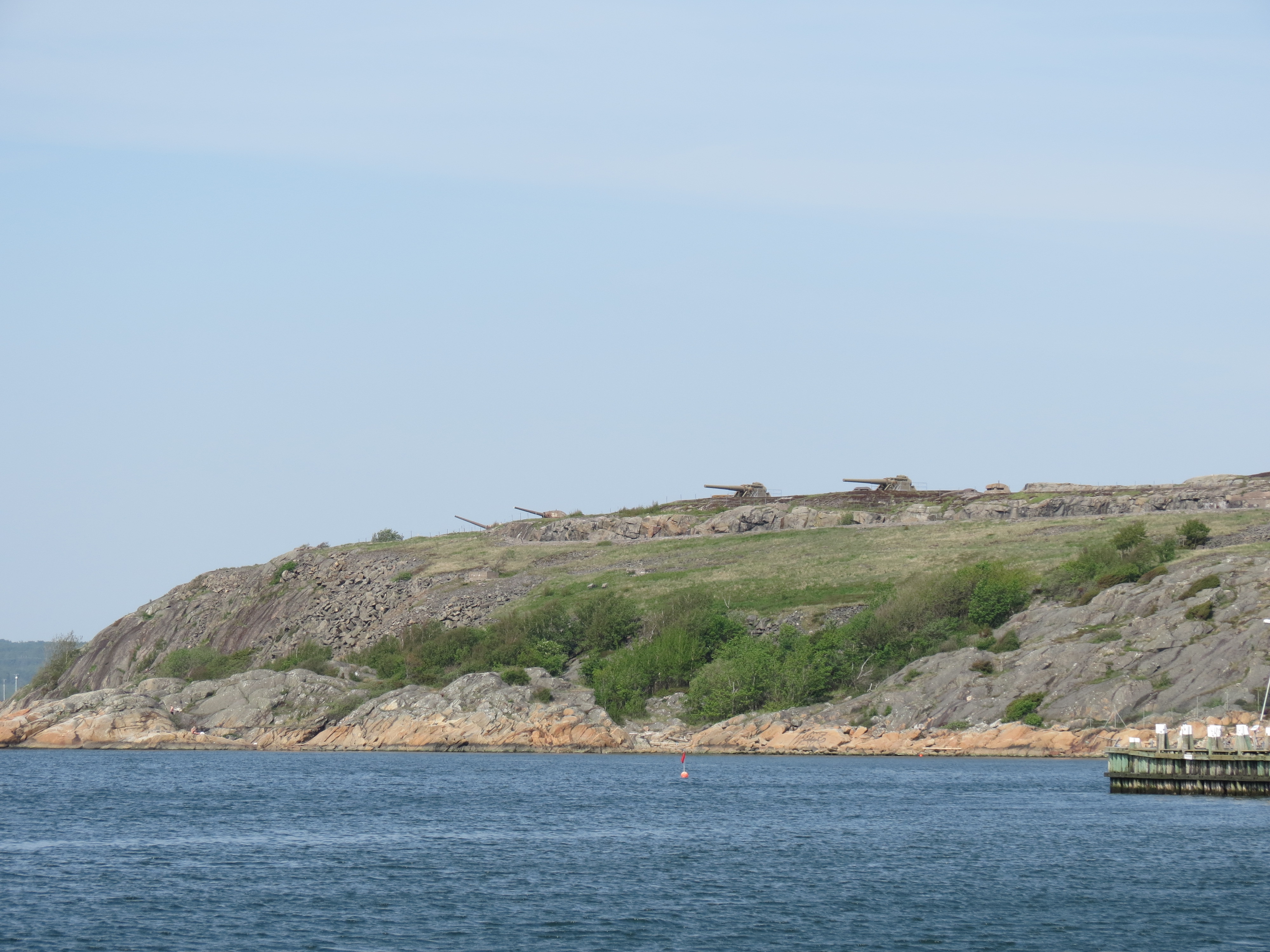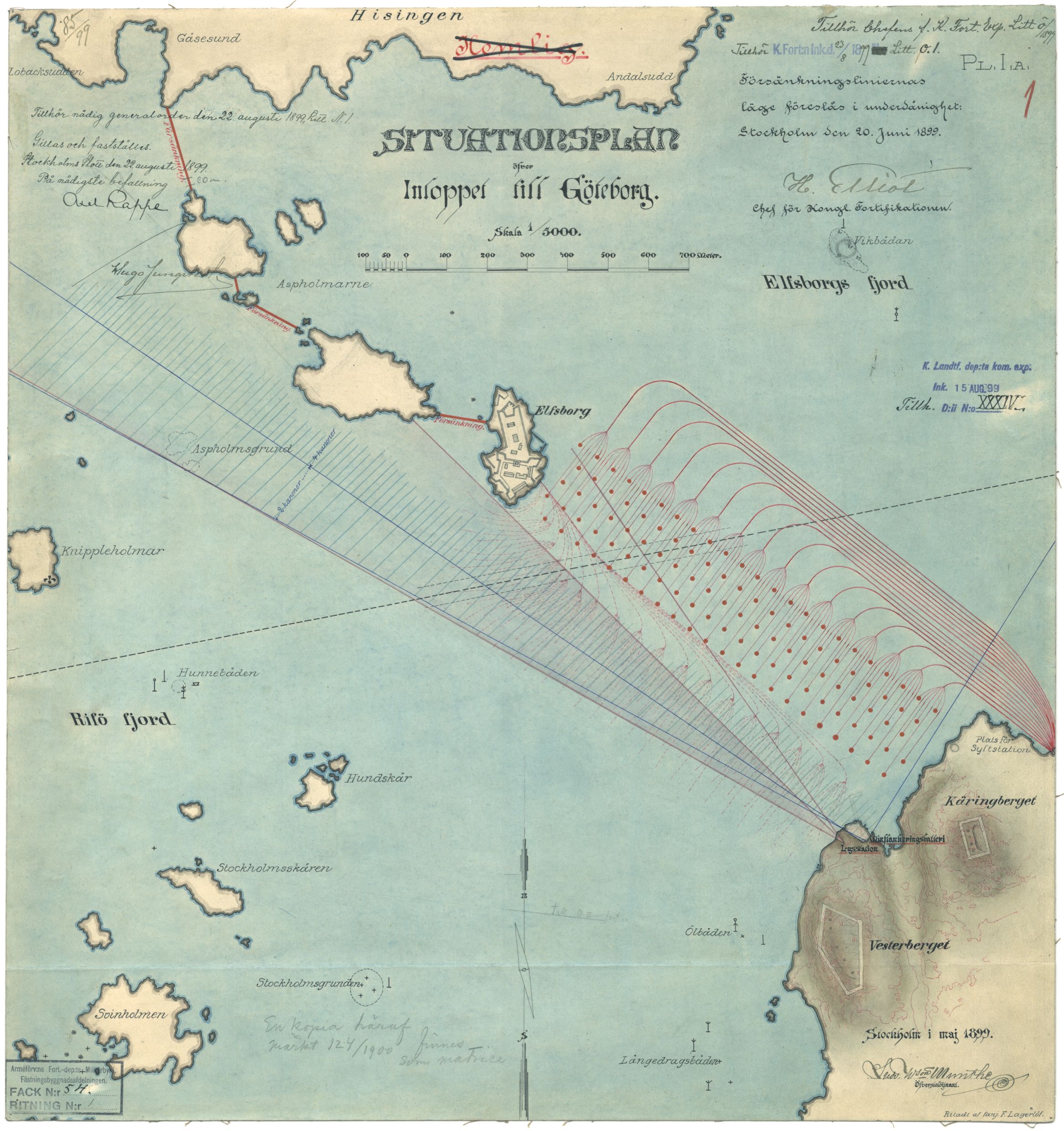Ο³lvsborg fortress on:
[Wikipedia]
[Google]
[Amazon]
 Ο³lvsborg Fortress ( sv, Ο³lvsborgs fΟΛstning), with its main facility Oscar II's Fort ( sv, Oscar II:s fort) built 1899βÄ™1907, is a now-defunct Swedish fortification located at the mouth of the
Ο³lvsborg Fortress ( sv, Ο³lvsborgs fΟΛstning), with its main facility Oscar II's Fort ( sv, Oscar II:s fort) built 1899βÄ™1907, is a now-defunct Swedish fortification located at the mouth of the
 Staffing:
*1902: one officer, three non-commissioned officers and 28 men
*1912βÄ™1914: eight officers, 19 non-commissioned officers and 123 men
*1915βÄ™1919: nine officers, 19 non-commissioned officers and 123 men
*1912βÄ™1925 ten officers, 41, non-commissioned officers and 103 men
*1926βÄ™1940: one officer, four non-commissioned officers and 9 men, as well as
*1940βÄ™1942: a gradual increase in personnel
Staffing:
*1902: one officer, three non-commissioned officers and 28 men
*1912βÄ™1914: eight officers, 19 non-commissioned officers and 123 men
*1915βÄ™1919: nine officers, 19 non-commissioned officers and 123 men
*1912βÄ™1925 ten officers, 41, non-commissioned officers and 103 men
*1926βÄ™1940: one officer, four non-commissioned officers and 9 men, as well as
*1940βÄ™1942: a gradual increase in personnel
File:24 cm cannon M04 at Ο³lvsborgs fΟΛstning.JPG, 24 cm gun M/04, one of two of this type.
File:24 cm cannon M04 at Ο³lvsborgs fΟΛstning (2).JPG, 24 cm gun M/04, one of two of this type.
File:Naval gun at Ο³lvsborgs fΟΛstning in Gothenburg.JPG, 15 cm gun, one of two of this type of coastal artillery gun.
File:Naval gun at Ο³lvsborgs fΟΛstning in Gothenburg (2).JPG, 15 cm gun, one of two of this type of coastal artillery gun.
GΟΕta River
GΟΕta is a Swedish given name, which is the female equivalent of GΟΕte. It may refer to:
*GΟΕta Ljungberg (1893βÄ™1955), Swedish singer
*GΟΕta Pettersson (1926βÄ™1993), Swedish gymnast
Other uses
*GΟΕta, Sweden
*GΟΕta ΟΛlv, a river in Sweden
*G ...
in the Ο³lvsborg district of Gothenburg
Gothenburg (; abbreviated Gbg; sv, GΟΕteborg ) is the second-largest city in Sweden, fifth-largest in the Nordic countries, and capital of the VΟΛstra GΟΕtaland County. It is situated by the Kattegat, on the west coast of Sweden, and has ...
, Sweden.
History
Construction of the fortress began in 1899 and was completed in modern condition in 1907. In 1904 the name Ο³lvsborg Fortress was given to the new coastal fortress at the mouth of theGΟΕta River
GΟΕta is a Swedish given name, which is the female equivalent of GΟΕte. It may refer to:
*GΟΕta Ljungberg (1893βÄ™1955), Swedish singer
*GΟΕta Pettersson (1926βÄ™1993), Swedish gymnast
Other uses
*GΟΕta, Sweden
*GΟΕta ΟΛlv, a river in Sweden
*G ...
, whose strongest fortification, Oscar II's Fort, started construction in 1899 on VΟΛsterberget. The fortress, whose task, like previous fortresses, was to secure both Gothenburg
Gothenburg (; abbreviated Gbg; sv, GΟΕteborg ) is the second-largest city in Sweden, fifth-largest in the Nordic countries, and capital of the VΟΛstra GΟΕtaland County. It is situated by the Kattegat, on the west coast of Sweden, and has ...
and the Port of Gothenburg
The municipally-owned Port of Gothenburg ( sv, GΟΕteborgs hamn) is the largest port in the Nordic countries, with over 11,000 ship visits per year from over 140 destinations worldwide. As the only Swedish port with the capacity to cope with the ...
and the Swedish Navy
The Swedish Navy ( sv, Svenska marinen) is the naval branch of the Swedish Armed Forces. It is composed of surface and submarine naval units – the Fleet () – as well as marine units, the Amphibious Corps ().
In Swedish, vessels o ...
's rallying point there against attacks from the sea, was in 1907 equipped with new modern artillery guns. The main body of the fortress consisted of two 24 cm guns model of 1904 mounted on disappearing carriages and some 15 cm gun turrets and other light guns. The fort, which is immersed in the basement
A basement or cellar is one or more floors of a building that are completely or partly below the ground floor. It generally is used as a utility space for a building, where such items as the furnace, water heater, breaker panel or fuse box, ...
, encompasses space for 300 people and consists of several hundred meters of walkways with offices, lodgings, mess
The mess (also called a mess deck aboard ships) is a designated area where military personnel socialize, eat and (in some cases) live. The term is also used to indicate the groups of military personnel who belong to separate messes, such as the o ...
es and stores. The fort's armament was completed in 1907. In addition naval mines around the flanks, there was also a light battery, the ''GΟΕtiska batteriet'' ("Geatish Battery") donated by the Geatish Society
The Geatish Society (''GΟΕtiska FΟΕrbundet'', also Gothic Union, Gothic League) was created by a number of Swedish poets and authors in 1811, as a social club for literary studies among academics in Sweden, with a view to raising the moral tone o ...
.
On King Albert I of Belgium
Albert I (8 April 1875 βÄ™ 17 February 1934) was King of the Belgians from 23 December 1909 until his death in 1934.
Born in Brussels as the fifth child and second son of Prince Philippe, Count of Flanders and Princess Marie of Hohenzollern-S ...
's arrival and departure from Gothenburg in connection with the visit of the then Crown Prince Leopold's wedding to Princess Astrid on 4 November 1926, a greeting was fired from Ο³lvsborg Fortress. This was at the same time KA 3's farewell salute and the last salute given by Ο³lvsborg Fortress. On 1 November of the same year, the fortress had already been placed into materiel reserve. Prior to the threatening foreign policy situation, the fortress was put in the defensive state in the fall of 1939. Oscar II's Fort lost its guns in 1939-1940 with the exception of the ''GΟΕtiska batteriet'', when they were moved to the main defense line on the outskirts of Gothenburg archipelago
The archipelago of Gothenburg ( sv, GΟΕteborgs skΟΛrgΟΞrd) comprises northern and southern archipelagoes. The southern archipelago is part of Gothenburg municipality located in the province of VΟΛstergΟΕtland while the northern archipelago is Ο•c ...
. During World War II
World War II or the Second World War, often abbreviated as WWII or WW2, was a world war that lasted from 1939 to 1945. It involved the vast majority of the world's countriesβÄîincluding all of the great powersβÄîforming two opposin ...
, the fortress and the fortress area were used for accommodation etc. In 1942, Ο³lvsborg Fortress was amalgamated into Gothenburg Coastal Artillery Defence
Gothenburg Coastal Artillery Defence ( sv, GΟΕteborgs kustartillerifΟΕrsvar, GbK) was a unit of the Swedish Coastal Artillery which operated from 1942 to 1980. The staff was located in the Gothenburg Garrison in Gothenburg, Sweden.
The Gothenbu ...
, which, with its fortifications, batteries and mine barriers in the Gothenburg archipelago, took over the traditional defence of Gothenburg. Until the 1970s, the fortress spaces were used for storage. Due to a significant deterioration of the internal passages and spaces, the fortress was completely disbanded during the 1970s.
The fortress became a listed building
In the United Kingdom, a listed building or listed structure is one that has been placed on one of the four statutory lists maintained by Historic England in England, Historic Environment Scotland in Scotland, in Wales, and the Northern Irel ...
on 15 March 2018.
Staffing of Ο³lvsborg Fortress
 Staffing:
*1902: one officer, three non-commissioned officers and 28 men
*1912βÄ™1914: eight officers, 19 non-commissioned officers and 123 men
*1915βÄ™1919: nine officers, 19 non-commissioned officers and 123 men
*1912βÄ™1925 ten officers, 41, non-commissioned officers and 103 men
*1926βÄ™1940: one officer, four non-commissioned officers and 9 men, as well as
*1940βÄ™1942: a gradual increase in personnel
Staffing:
*1902: one officer, three non-commissioned officers and 28 men
*1912βÄ™1914: eight officers, 19 non-commissioned officers and 123 men
*1915βÄ™1919: nine officers, 19 non-commissioned officers and 123 men
*1912βÄ™1925 ten officers, 41, non-commissioned officers and 103 men
*1926βÄ™1940: one officer, four non-commissioned officers and 9 men, as well as
*1940βÄ™1942: a gradual increase in personnel
Commandants
Commandants: *1908βÄ™1914: Sam Bolling *1914βÄ™1924: Arthur EdstrΟΕm *1924βÄ™1925: Hans Malmberg *1925βÄ™1927: Karl NorΟ©n *1927βÄ™1930: Gustaf Peterson *1930βÄ™1936: Folke Eriksson *1936βÄ™1939: Sigge Hultkrantz *1939βÄ™1941: ΟÖke Wockatz *1941βÄ™1942:Rudolf Kolmodin
Lieutenant General Karl Rudolf Kolmodin (17 January 1896 βÄ™ 29 August 1978) was a Swedish Coastal Artillery officer. Kolmodin's senior commands include postings as commanding officer of the Gothenburg Coastal Artillery Defence and Stockholm Coas ...
Guns
References
{{Gothenburg Forts in Sweden Gothenburg Garrison Buildings and structures in Gothenburg Coastal fortifications Listed buildings in Gothenburg